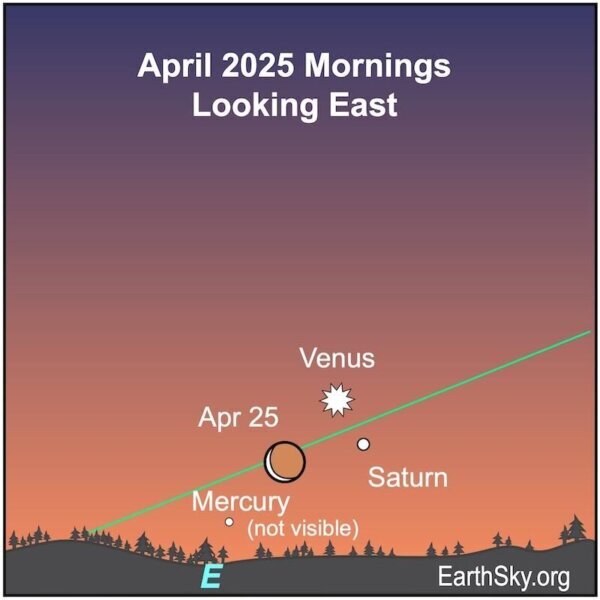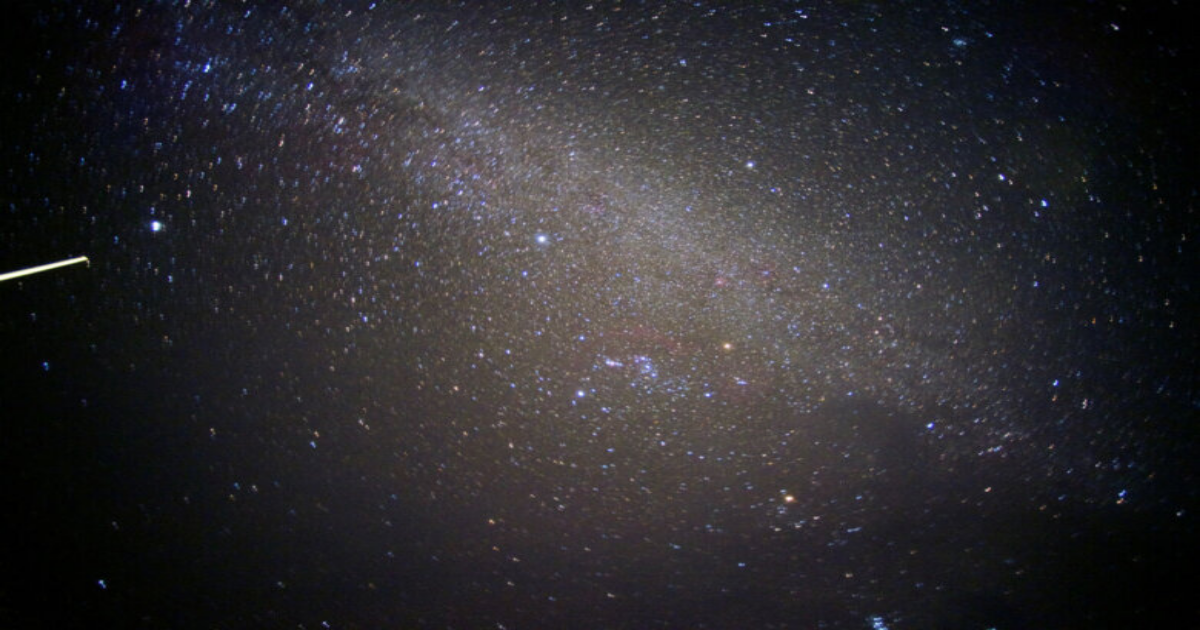The internet has been abuzz with the possibility of sky watchers seeing a “smiley face” in the eastern sky above the horizon on Friday morning before dawn.
Just so you know, some of the graphics used to portray this cool conjunction of moon and planets aren’t accurate.
As I described in WTOP’s monthly “What’s up In the sky for April 2025,” what sky watchers will be able to see is pretty neat.
Low on the eastern horizon, brilliant Venus will be above Saturn and the waning crescent moon will be to their right on Thursday and will form a triangle with them on Friday. Mercury will be below and to the left of this celestial gathering. Binoculars will help to find Mercury and enhance your view these mornings. Try taking a smartphone/camera pic.
 (Courtesy EarthSky)
(Courtesy EarthSky)
Be sure to check the weather beforehand and keep your fingers crossed for clear skies.
This conjunction Friday morning might look like a smiley face to some, but it does give us an accurate 3D view of our solar system.
Your view of this event is determined by your location on planet Earth — think Northern or Southern Hemisphere, or even the equator or poles, instead of the D.C. region. The moon and planets would be at a different angle and positioning relative to one another due to time zone and latitude differences.
Also consider that we see these solar system members because of the sunlight reflected off their surfaces, whether they are solid (moon and Mercury) or cloud covered (Venus and Saturn). Traveling at 186,000 miles per second — the speed of light — the moon’s reflected sunlight on Friday morning will take 1.2 seconds to reach our eyes, 7.54 minutes for Mercury, 3.48 minutes for Venus and 86.21 minutes for Saturn.
Oh, I almost forgot — sunlight takes 8.37 minutes to reach us here on Earth on Friday morning.
These light travel time distances to our eyes change every second because all objects in our solar system are constantly in motion in their orbit around the sun.
While gazing at this celestial lineup, take a peek at the time and consider the workings of our solar system that you are seeing live. It’s pretty amazing.
Follow Greg Redfern on Facebook, Bluesky and his daily blog to keep up with the latest news in astronomy and space exploration.
Get breaking news and daily headlines delivered to your email inbox by signing up here.
© 2025 WTOP. All Rights Reserved. This website is not intended for users located within the European Economic Area.
